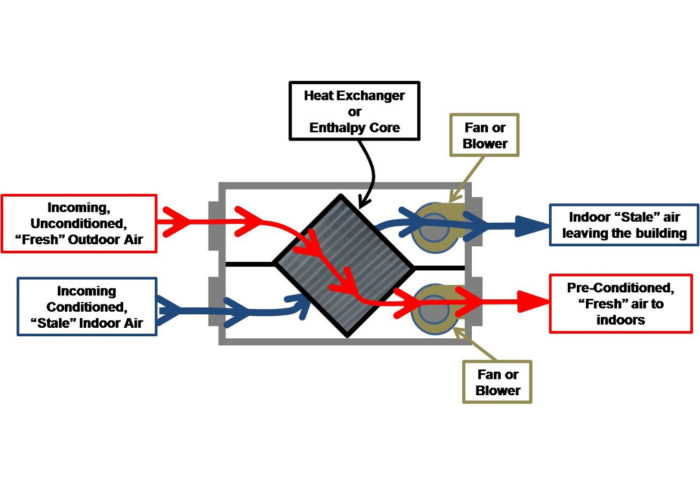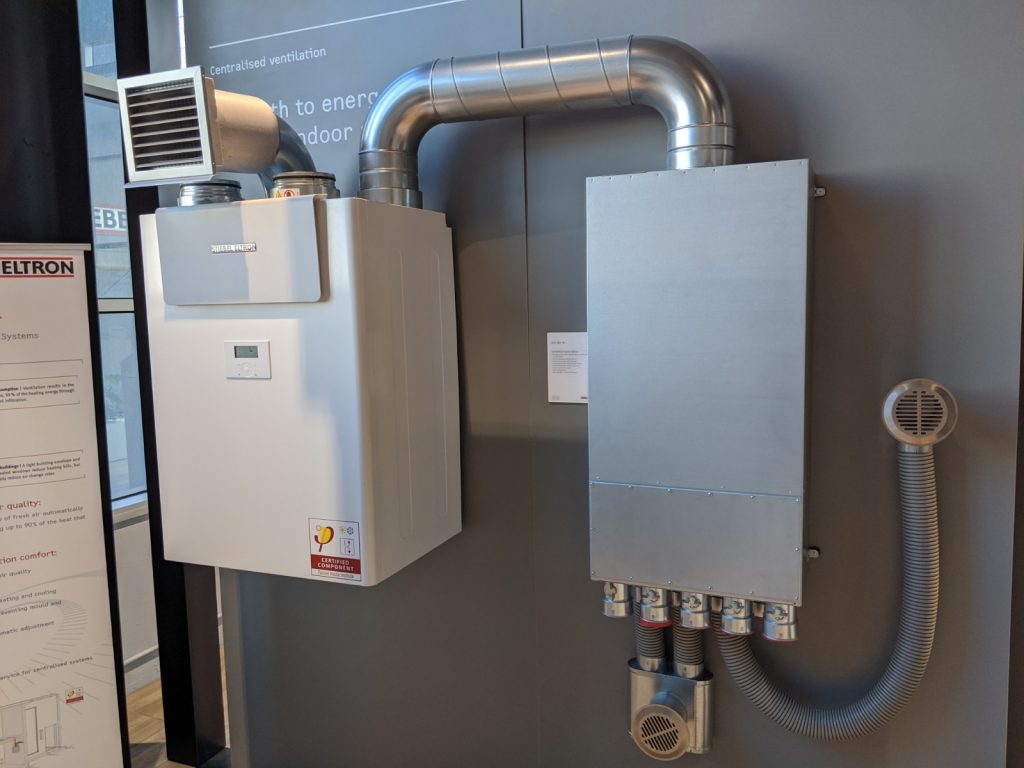What Is HRV and Its Role in Homes
Wiki Article
Discovering the Advantages of Heat Recovery Ventilation for Energy Efficiency in Residences
Heat Recovery Ventilation (HRV) systems supply property owners a useful approach to improving energy effectiveness. By recovering warmth from outward bound air, these systems can significantly reduce heating & cooling expenses. Furthermore, they give a constant supply of fresh air, enhancing indoor air top quality and convenience levels. As house owners take into consideration lasting alternatives, recognizing the nuances of HRV systems comes to be significantly crucial. What aspects should one review before making such a financial investment?Comprehending Heat Recovery Ventilation Solutions

Exactly How HRV Improves Indoor Air Quality

Energy Financial Savings: The Financial Benefits of HRV
Making the most of energy efficiency, heat recovery ventilation (HRV) systems use considerable monetary advantages for homeowners. By recouping and recycling heat from exhaust air, HRVs noticeably lower cooling and heating costs. This technology can lead to power cost savings of approximately 30%, depending upon environment and use patterns. Home owners frequently notice lowered utility bills soon after installment, making HRVs an economically wise investment over time. Furthermore, several regions offer incentives or rebates for energy-efficient upgrades, additionally enhancing the economic allure. As energy rates remain to increase, the cost-effectiveness of HRVs comes to be HRV Heat Recovery Ventilation increasingly clear. In general, the unification of HRV systems not only advertises power performance yet additionally adds to lasting economic savings for households.The Environmental Impact of Heat Recovery Ventilation
A significant environmental benefit of heat recovery ventilation (HRV) systems lies in their capability to reduce general power intake. By redeeming warmth from exhaust air and transferring it to incoming fresh air, HRV systems minimize the demand for energy-intensive home heating and cooling down techniques. This decrease in energy need contributes to decrease greenhouse gas exhausts, as much less fossil fuel is required to preserve comfortable indoor temperatures. Additionally, HRV systems improve indoor air high quality by effectively exchanging stale air with fresh exterior air, decreasing reliance on mechanical cooling systems that can harm the environment. Overall, the implementation of HRV systems sustains lasting living techniques and lines up with worldwide efforts to combat climate change by promoting power efficiency in domestic setups.
Selecting the Right HRV System for Your Home
Just how can property owners ensure they select the best heat recovery ventilation (HRV) system for their requirements? Initially, they must analyze their home's size and design, as these variables affect air movement needs. Next off, examining the system's effectiveness ratings is vital, as greater ratings show better efficiency and energy financial savings. House owners ought to also consider installment and upkeep expenses, comparing various brands and versions for value. Additionally, it is very important to assess noise degrees, as some systems run even more quietly than others. Consulting with cooling and heating professionals can give customized referrals based upon certain home conditions. Lastly, taking a look at user reviews and warranties can assist in making an educated choice, guaranteeing that the chosen HRV system efficiently improves interior air high quality and energy effectiveness.Regularly Asked Questions

How Typically Should I Tidy or Maintain My HRV System?
The regularity of cleansing or maintaining a warmth recuperation ventilation (HRV) system usually relies on usage and ecological factors. Generally, it is recommended to carry out maintenance every six months to guarantee peak efficiency and air high quality.
Can HRV Solutions Assist Decrease Moisture Degrees Inside Your Home?
HRV systems can efficiently decrease indoor moisture degrees by trading stale, moist air with fresh, drier air from outside. HRV Heat Recovery Ventilation. This process assists keep a well balanced interior environment, boosting convenience and avoiding moisture-related concerns
What Is the Lifespan of a Regular HRV System?
The lifespan of a normal heat recovery ventilation (HRV) system varies, usually lasting between 10 to 15 years. Routine maintenance can expand its performance and operational life, making sure peak performance throughout its use duration.Are There Any Sound Issues With HRV Solutions?
Noise worry about HRV systems can arise, particularly from fan operation. Many modern-day devices are created to lessen sound levels, ensuring they run silently while keeping performance, which attends to prospective disruptions in living settings.Can I Mount an HRV System Myself, or Do I Required a Specialist?
The specific contemplated whether to set up the heat recovery ventilation (HRV) system directly or employ an expert. Normally, while do it yourself setup is possible, expertise guarantees appropriate capability and conformity with neighborhood building ordinance, boosting system effectiveness.Report this wiki page